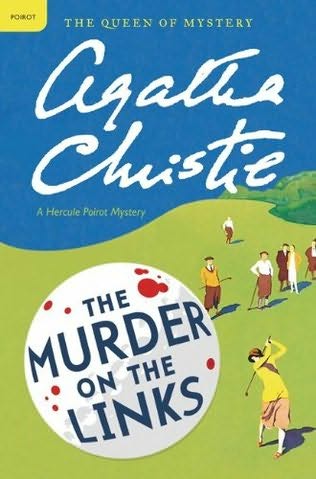 Originally published in 1923, I read an Agatha Christie Signature Edition published in 2001. ISBN 0-00-711928-3. 319 pages.
Originally published in 1923, I read an Agatha Christie Signature Edition published in 2001. ISBN 0-00-711928-3. 319 pages.
Having recently transacted some business in Paris, Arthur Hastings is returning to London, to the rooms he is now sharing with Belgian ex-detective Hercule Poirot, by the morning Calais express. He shares a compartment with a young woman who introduces herself as Cinderella.
On the following morning in London Poirot receives a letter from France, from someone who says he is desperate need of the services of a detective. The letter is written in a "bold characteristic hand", with a hastily scrawled line at the bottom, "For God's sake, come!" Poirot and Hastings set out straight away for Dover and then Calais. When they arrive at their destination they discover that the writer of the letter has already been murdered. His brutally stabbed body is discovered face down in a bunker on a nearby golf course, clad in its underwear and an extremely long overcoat.
This is Agatha Christie's third novel, her second to feature Hercule Poirot and Arthur Hastings. Although this is only the second time we have seen Poirot in action, Hastings implies they have worked other cases together since THE MYSTERIOUS AFFAIR AT STYLES. In a reference to Inspector Japp from Scotland Yard in the opening pages, Hastings says that he had "more than once introduced us to an interesting case."
The police have already been called to the murder scene by the time Poirot arrives and he is delighted to discover the police commissary is an old acquaintance whom he last saw in Ostend over a decade before. The commissary is able to introduce Poirot to the examining magistrate and the victim's doctor. After Poirot has inspected the scene and between them they have interviewed some of the household, a stranger turns up. He proves to be Monseiur Giraud from the Paris Surete, a much younger man, a "modern" detective, arrogant, self-assured, and only about thirty years old.
From this point on the action becomes a competition between Poirot and Giraud to solve the case. Poirot and Giraud constantly refute each other's theories, and Hastings typically is ready to see Poirot as a quibbler, and indeed at one stage goes out of his way to deceive Poirot and thus lets him down. Giraud disparages Poirot's deductive methods, preferring to use more scientific evidence such as the new art of fingerprinting. Poirot makes no secret of the fact that he believes Giraud is not nearly observant enough.
In addition Hastings loses his impartiality by falling head over heels in love with one of the suspects. It will be interesting to see if she appears in a future book.
The plot is quite a complex one, and indeed I feel that the complexity actually became a little difficult for Christie to sustain. The reader is required to accept a considerable degree of coincidence, straining the credibility of the plot just a bit.
There's quite a lot of description of Poirot and we have a really good idea of what he looks like. Hastings, through whose eyes we see the action of the novel, says "An extraordinary little man. Height, five feet four inches, egg-shaped head carried a little to one side, eyes that shone green when he was excited, stiff military moustache, air of dignity immense! He was neat and dandified in appearance." There is a scene however at the end of the novel which is a bit at odds with that description. Look out for it and see what you think.
"Dashing forward, he [Poirot] battered wildly on the front door. Then rushing to the tree in the flower-bed, he swarmed up it with the agility of a cat. I followed him, as with a bound he sprang in through the open window". Sedate, dapper, neat little Poirot climbs a tree? Never!
Just as in the earlier two books, there are quite large sections of denouement, when Christie makes sure that the reader understands the complexity of the plot and the cleverness of her carefully woven webs. Almost 80 pages before the end Poirot begins his exposition designed to make things clear for the thick Hastings. Hastings thinks all is resolved and Poirot reminds him there is yet one more murder to be solved.
My verdict. THE MURDER ON THE LINKS has stood the test of time quite well. Red herrings abound. Hercule Poirot changes his mind several times, and so did I.
My rating: 4.2
Interestingly MURDER ON THE LINKS contains a dedication "To My Husband a fellow enthusiast for detective stories and to whom I am indebted for much helpful advice and criticism."
Agatha has been married to Colonel Archibald Christie since 1914, and her marriage, although apparently an unhappy one, will survive until their divorce in 1928.
You might enjoy seeing the comic strip version. Browse inside MURDER ON THE LINKS: Comic Strip version. Sample below.

3 comments:
I can see how her mysteries may get confusing at times. I've only read a few, but I know I need to stay wide awake as to not missing anything. :)
Joy, I have a mental picture of the fledgling Agatha trying her figurative wings out in these early novels, looking for characters she is happy with, playing with plot complexity etc.
Yep, I think you're right.
Post a Comment